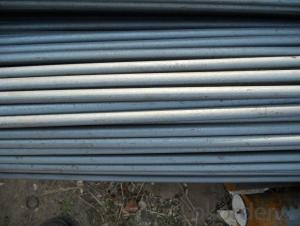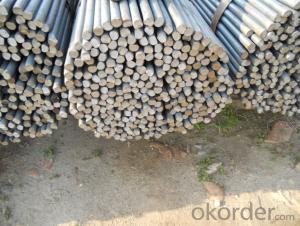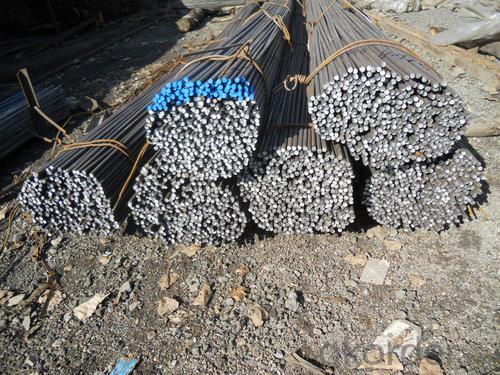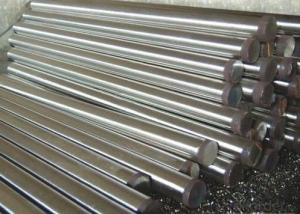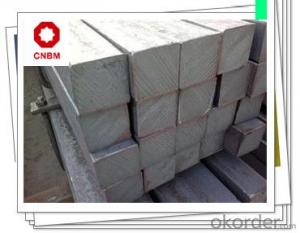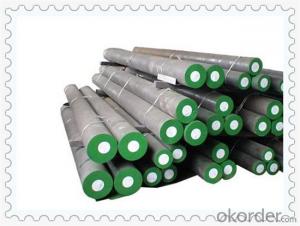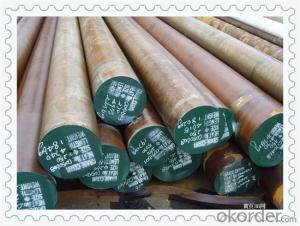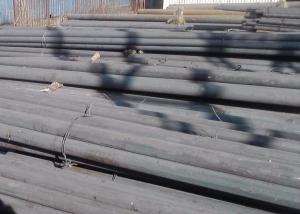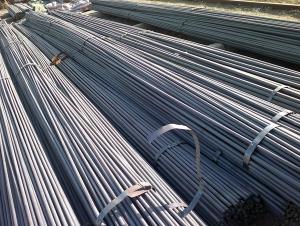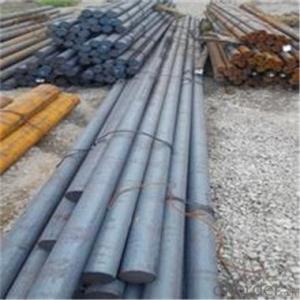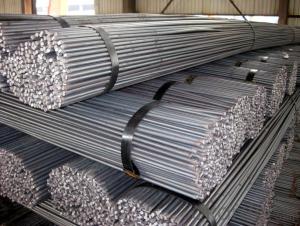American Standard High Quality Round Bar
- Loading Port:
- China Main Port
- Payment Terms:
- TT or LC
- Min Order Qty:
- -
- Supply Capability:
- -
OKorder Service Pledge
OKorder Financial Service
You Might Also Like
Product Description:
OKorder is offering high quality American Standard High Quality Round Bar at great prices with worldwide shipping. Our supplier is a world-class manufacturer of steel, with our products utilized the world over. OKorder annually supplies products to European, North American and Asian markets. We provide quotations within 24 hours of receiving an inquiry and guarantee competitive prices.
Product Applications:
American Standard High Quality Round Bar are ideal for structural applications and are widely used in the construction of buildings and bridges, and the manufacturing, petrochemical, and transportation industries.
Product Advantages:
OKorder's American Standard High Quality Round Bar are durable, strong, and resist corrosion.
Main Product Features:
· Premium quality
· Prompt delivery & seaworthy packing (30 days after receiving deposit)
· Corrosion resistance
· Can be recycled and reused
· Mill test certification
· Professional Service
· Competitive pricing
Specifications of American Standard High Quality Round Bar
1. Grade: ASTM A36; AISI 1006-1025
2. Sizes: Diameter: 6mm-150mm; Length: 6m, 9m, 12m or as customer’s request
3. Tolerance: Within ±5% for weight; ±2mm for diameter
4. Type: Mild steel; Low carbon steel
5. Shape: Round bar, solid bar of steel with circular section
6. Technique: Hot rolled or cold drawn
7. Mass: Mass (kg/m) = Diameter (mm) × Diameter (mm) × 0.00617
Usage and Applications of American Standard Round Bar
1. American standard is the most common form of steel as its price is relatively low while it provides material properties that are acceptable for many applications. American standard round bar is often used where large amounts of steel need to be formed, for example as structural steel.
2. And we can use this kind of product on the performance of the mechanical parts if the demand is not very high.
3. Steel round bar is used in construction and a large number of architectural and engineering structures.
4. Some special round bar can be used for automotive engine and transmission components, bearing, rails machine tools and wire rope.
Packaging & Delivery of American Standard Round Bar
Packaging Detail: All goods are packed in bundle with steel strips and shipped by break bulk vessel or container (depend on target market and different ports)
Delivery Detail: 45 days
Trade terms: FOB, CFR, CIF
MOQ: 25 tons per specification; we can negotiate the quantity if the specification is normal or we have stock of one specification.
Weight: The price invoicing on theoretical weight basis or actual weight basis depends on customer’s request.
Shipment: The shipment of bulk break or container is depends on customer’s request and the situation of the port of destination.
Documents given: Full set of original clean on board bill of lading; Original signed commercial invoice; Original packing list; Policy of insurance; Certificate of origin and what the target market needs.
Production Flow of American Standard Round Bar
The common processes are preheated forging quenching, dual refinement solution process, cooling quenching and isothermal quenching. We use heat treatment for dual refinement solution process.
Quality Assurance of American Standard Round Bar
1. We will strictly inspect our production that we sold according to the customer’s request.
2. Quality should be in conformity with the specification of the manufacturer. Quantity and packing conditions should be in conformity with the term in the contract.
3. Should the packing found damaged, the buyer has the right to claim to the seller.
FAQ:
Q1: Why buy Materials & Equipment from OKorder.com?
A1: All products offered byOKorder.com are carefully selected from China's most reliable manufacturing enterprises. Through its ISO certifications, OKorder.com adheres to the highest standards and a commitment to supply chain safety and customer satisfaction.
Q2: How do we guarantee the quality of our products?
A2: We have established an advanced quality management system which conducts strict quality tests at every step, from raw materials to the final product. At the same time, we provide extensive follow-up service assurances as required.
Q3: How soon can we receive the product after purchase?
A3: Within three days of placing an order, we will begin production. The specific shipping date is dependent upon international and government factors, but is typically 7 to 10 workdays.
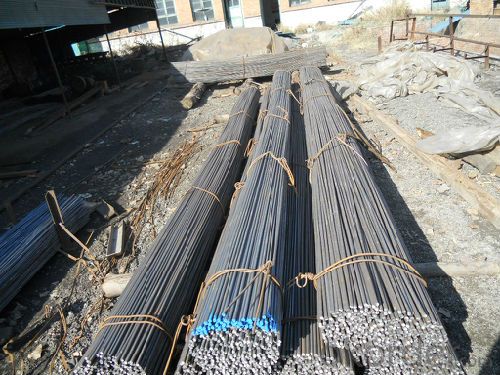
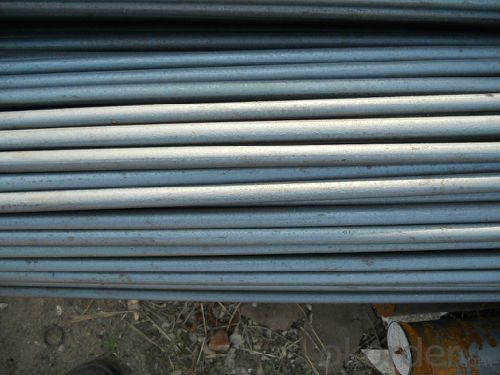
- Q: How do you calculate the weight of a steel round bar based on its length and volume?
- To calculate the weight of a steel round bar based on its length and volume, you need to know the density of the steel. The density represents the amount of mass per unit volume of the material. The formula to calculate the weight is: Weight = Volume × Density First, you need to calculate the volume of the steel round bar. The volume of a cylinder (which is the shape of a round bar) is given by the formula: Volume = π × (Radius)^2 × Length Where π is a mathematical constant approximately equal to 3.14, and Radius is the radius of the round bar. Once you have the volume, you can multiply it by the density of the steel to find the weight. The density of steel can vary depending on the specific type of steel being used. For example, the density of mild steel is around 7850 kg/m³. Therefore, the weight of the steel round bar is calculated as: Weight = Volume × Density For example, let's say we have a steel round bar with a length of 1 meter and a radius of 0.5 meters. To calculate the weight, we need to find the volume first: Volume = π × (0.5)^2 × 1 Volume = 0.7854 m³ Next, we multiply the volume by the density of steel: Weight = 0.7854 m³ × 7850 kg/m³ Weight = 6171.79 kg So, the weight of the steel round bar would be approximately 6171.79 kg.
- Q: How are steel round bars measured and specified?
- The diameter is utilized to measure and specify steel round bars. Typically, the diameter of a round bar is measured in millimeters or inches. The measurement is taken at the widest point of the circular cross-section. When it comes to specification, steel round bars are commonly specified by their diameter and length. For instance, a steel round bar can be specified as "25mm diameter x 3 meters length". This indicates that the bar has a diameter of 25mm and a length of 3 meters. Moreover, steel round bars can also be specified based on their tolerance, surface finish, and grade. Tolerance refers to the allowable deviation from the specified diameter. Surface finish pertains to the quality of the bar's surface, which can vary from rough to smooth. Grade signifies the quality and composition of the steel utilized to produce the round bar, such as mild steel, carbon steel, or alloy steel. Accurate measurement and specification of steel round bars are crucial to ensure that they meet the necessary dimensions and properties for a specific application.
- Q: What are the different welding techniques for steel round bars?
- There are several different welding techniques that can be used for steel round bars, including shielded metal arc welding (SMAW), gas metal arc welding (GMAW), gas tungsten arc welding (GTAW), and flux-cored arc welding (FCAW). Each technique has its own advantages and disadvantages, depending on factors such as the thickness of the steel, the desired weld strength, and the specific application.
- Q: Grade 1 steel is round steel, grade two steel is ribbed thread steel. Are the weight of the two units the same?
- Grade two steel is ribbed steel, but the average diameter is calculated. The chemical composition of grade steel and grade two steel is different, but the density of them is the same. Therefore, the unit weight of grade 1 steel and grade two steel is the same.
- Q: What is the maximum copper content allowed for steel round bars?
- The maximum copper content allowed for steel round bars typically depends on the specific industry standards and specifications. However, in general, the copper content in steel round bars is usually limited to around 0.35% to 0.50% to maintain the desired mechanical properties and prevent any negative effects on the material's performance.
- Q: How do you prevent warping during welding of steel round bars?
- To prevent warping during welding of steel round bars, there are several precautions that can be taken: 1. Proper fit-up: Ensure that the round bars are properly aligned and fit together before welding. Any gaps or misalignments can lead to uneven heating and cooling, increasing the chances of warping. 2. Welding sequence: Divide the welding into multiple smaller sections or segments instead of welding continuously along the entire length of the round bar. This will help distribute the heat more evenly and reduce the risk of warping. 3. Welding technique: Use a welding technique that minimizes heat input, such as pulse welding or tack welding. These techniques allow for controlled and intermittent heating, which reduces the chances of warping. 4. Preheating: Preheating the round bars before welding can also help prevent warping. This is especially important for thicker bars or when welding dissimilar metals. Preheating helps to reduce the temperature gradient between the weld and the surrounding material, minimizing the risk of warping. 5. Heat control: Monitor and control the heat input during welding. Excessive heat can cause rapid expansion and contraction, leading to warping. Use appropriate welding parameters, such as lower amperage and shorter welding times, to control the heat input. 6. Welding fixtures: Use welding fixtures or jigs to hold the round bars in place during welding. This helps to maintain proper alignment and prevents movement during the welding process, reducing the chances of warping. 7. Post-welding cooling: Allow the welded round bars to cool down slowly and naturally. Avoid rapid cooling methods like quenching, as they can induce stress and increase the risk of warping. By implementing these measures, the risk of warping during welding of steel round bars can be significantly reduced, resulting in better quality and more reliable welded joints.
- Q: What are the different types of steel round bar surface finishes for corrosion resistance?
- Corrosion resistance in steel round bars can be achieved through various surface finishes. These finishes effectively shield the bar from corrosive elements, reducing the risk of rust or degradation over time. Hot-dip galvanizing is a popular choice for corrosion resistance. It entails immersing the steel round bar in molten zinc, which creates a protective zinc coating. This sacrificial anode corrodes before the steel, providing long-lasting protection against rust and corrosion. Stainless steel is another common surface finish for corrosion resistance. With a minimum chromium content of 10.5%, it forms a passive oxide layer when exposed to oxygen. This layer acts as a barrier, preventing further oxidation and corrosion, making stainless steel round bars highly resistant to rust. Electroplating is a method used to provide corrosion resistance. By immersing the bar in an electrolyte solution and passing an electric current through it, a layer of metal like zinc or nickel is deposited onto the surface, offering a protective coating. For steel round bars that require both corrosion resistance and aesthetic appeal, powder coating is a popular choice. This process involves applying a dry powder coating to the surface and curing it under heat. The resulting hard, durable finish not only offers excellent corrosion resistance but also provides a variety of color options. There are also specialized coatings available for specific applications, such as epoxy or polymer coatings. These coatings offer superior resistance to particular corrosive environments, like exposure to chemicals or high humidity. In conclusion, there are several types of surface finishes for corrosion resistance in steel round bars. These include hot-dip galvanizing, stainless steel, electroplating, powder coating, and specialized coatings. The choice of finish depends on factors such as the specific application, environmental conditions, and desired aesthetics.
- Q: Can steel round bars be used for making propeller shafts?
- Yes, steel round bars can be used for making propeller shafts. Steel is a commonly used material for propeller shafts due to its strength, durability, and resistance to corrosion. Round bars, in particular, are often chosen for their shape, which provides optimal strength and load-bearing capabilities. The selection of steel grade and specific properties will depend on the requirements of the propeller shaft, such as the desired length, diameter, and torque capacity. Additionally, other factors like cost, weight, and manufacturability may also influence the choice of steel round bars for propeller shafts.
- Q: Can steel round bars be used in the manufacturing of flanges?
- Yes, steel round bars can be used in the manufacturing of flanges. They are commonly used to create the flange body, providing strength and durability for various applications. The round bars are typically machined and shaped to form the desired flange design, allowing for a secure connection between pipes, valves, or other equipment in a wide range of industrial settings.
- Q: What is the difference between a seamless and a welded steel round bar?
- The main difference between a seamless and a welded steel round bar lies in their manufacturing processes. A seamless steel round bar is produced by piercing a solid cylindrical billet, while a welded steel round bar is created by welding together multiple pieces of steel. This results in a seamless bar having a smoother surface and uniform composition, making it stronger and more resistant to corrosion. On the other hand, a welded round bar may have visible seams due to the welding process, which can affect its strength and durability.
Send your message to us
American Standard High Quality Round Bar
- Loading Port:
- China Main Port
- Payment Terms:
- TT or LC
- Min Order Qty:
- -
- Supply Capability:
- -
OKorder Service Pledge
OKorder Financial Service
Similar products
Hot products
Hot Searches
Related keywords


